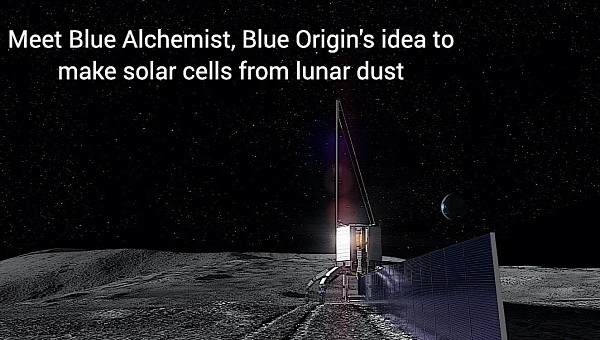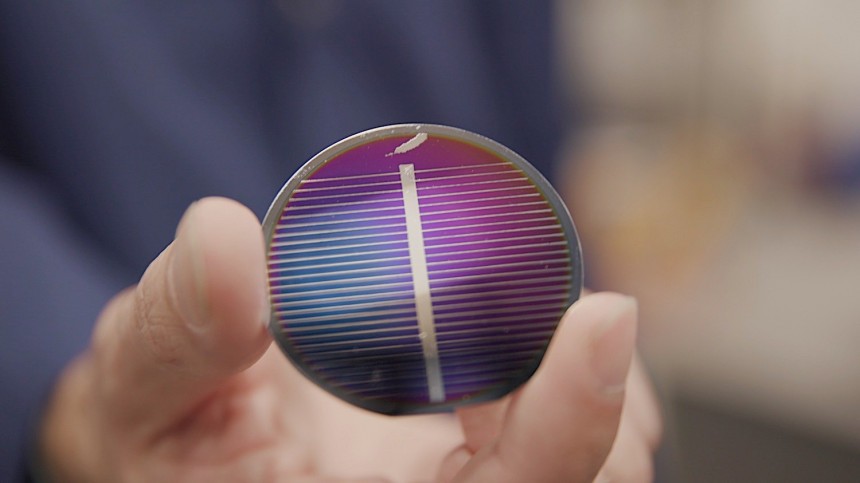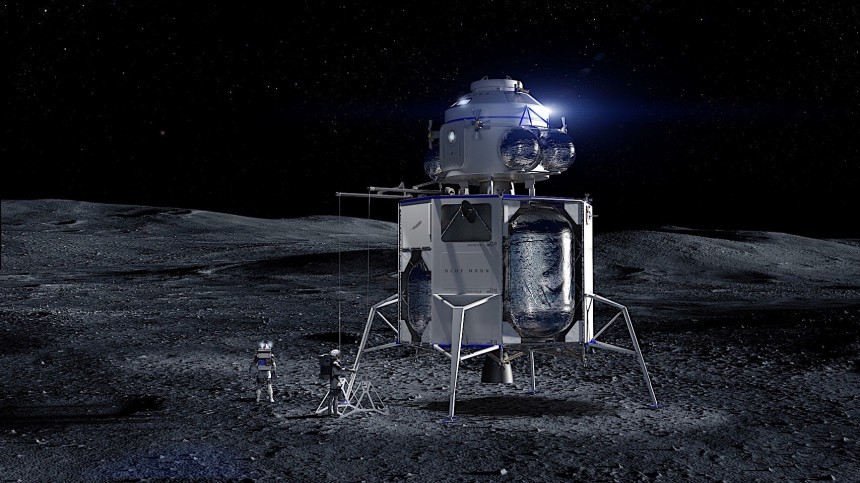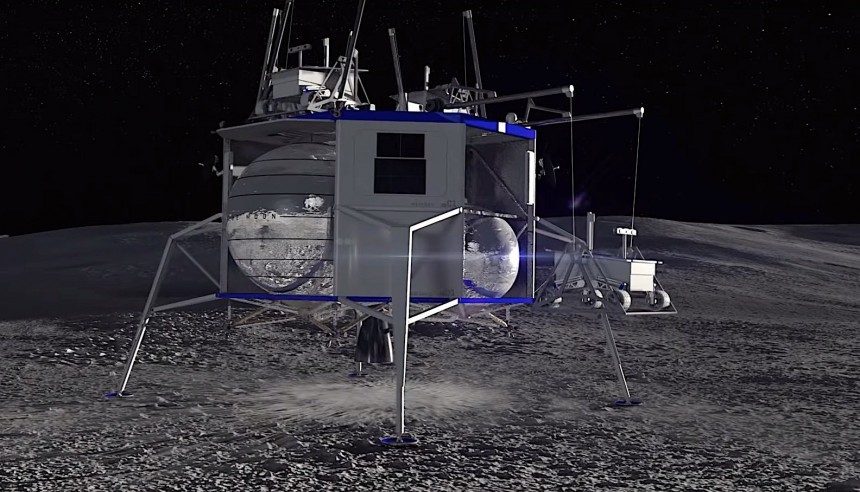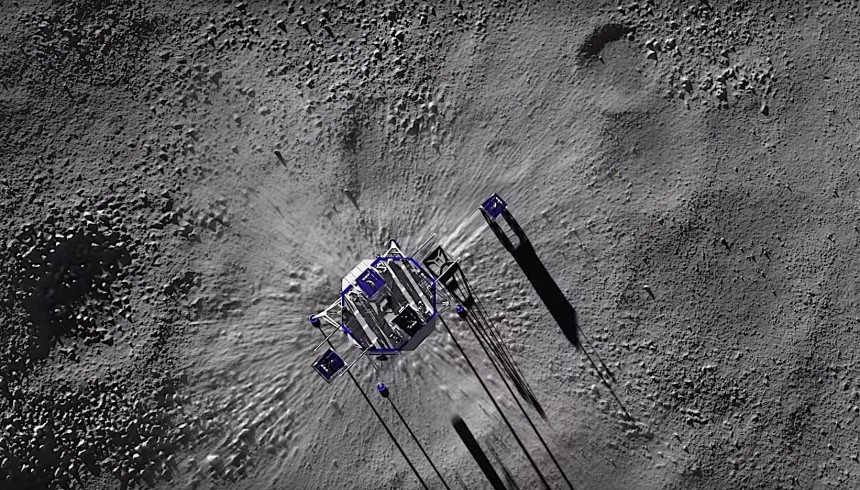Alchemy has always been considered the most elusive of all sciences, a way to mix a bit of real-world know-how with a twist of magic and turn ordinary metals into gold. Alternatively, alchemy has always been seen as a path to some magical cure/purifier/elixir meant to make humans immortal. And now, thanks to space company Blue Origin, alchemy will hand us the Moon.
It's been a while since we’ve heard anything from the entity born from the mind of Amazon’s Jeff Bezos.
Since losing the opening fight against Elon Musk’s SpaceX a couple of years ago for NASA's lunar landers, which means it will not land the first astronauts of the Artemis program on the Moon, Blue Origin has said nothing about its Blue Moon vehicle since.
Separately, almost two years ago, the company started taking ordinary civilians (and also a Federation starship captain) past the Karman line for brief (and expensive) incursions into outer space. The last one took place in August 2022, when the NS-22 mission transported six people up there. NS-23, a payload-only flight, failed in September, and that was it for space missions, as none have happened since.
But late last week, Blue Origin came back in the news when it released some details on something it calls the Blue Alchemist, an idea that’s supposed to open up the Moon for our species.
As things stand now, it’s clear our biggest challenge is not taking people to other worlds, but allowing them to live there. That’s because both of the places currently on our radar for exploration and possible colonization, the Moon and Mars, are absolutely dead and you can find nothing of use there. Or can you?
Turns out both the Moon and Mars are rich in the materials we need to cover some of our basic requirements, including oxygen for breathing and fuel, and water for living and… you name it. The trick is we do not yet have the technology needed to extract these materials and rid ourselves of the hassle of constantly sending supplies up there.
Called in-situ resource utilization (ISRU), the concept of taking advantage of what we find on alien worlds to expand our reach and fulfill our goals is getting increased traction, and more and more companies are jumping on board.
Starting in 2021, and completely under the radar, Blue Origin has been working on this Blue Alchemist thing. We’re talking about a technology-slash-process that could transform lunar regolith (moondust, if you like) into solar cells and transmission wires to be used for a lunar station’s electricity needs. And the entire thing has some interesting byproducts as well.
In the two years or so that have passed since the project kicked off, Blue Origin has tested and refined the process. Since access to lunar regolith is not currently possible, the company used simulants, regolith replacements made here on Earth.
We’re told the simulants are “chemically and mineralogically equivalent to lunar regolith” and as accurate as possible in terms of their bulk chemistry. On the Moon, it comprises a wide variety of elements, including silicon, manganese, magnesium, calcium, and so on.
These simulants are inserted into a sort of reactor Blue Origin did not properly detail yet, but which seems to be the real alchemist in all of this. The reactor runs at temperatures of 1,600 degrees Celsius (2,912 degrees Fahrenheit) and effectively breaks down the now molten regolith into its component parts.
This is done through a process called electrolysis (the same kind used to break up water into hydrogen and oxygen) – basically, a current passes through the stuff, and this helps with the extraction of iron, silicon, and aluminum, while at the same time generating oxygen as a byproduct.
To give us an idea of just how effective the process is, Blue Origin claims Blue Alchemist is capable of extracting silicon with a purity of 99.999 percent. That makes it ideal for use in the creation of solar cells that could be used on the solar panels we’re likely to spread all over the surface of the Moon.
How will these cells be made? Well, on our planet they’re made from silicon that can only become so pure by using processes and techniques that are far from being as green as the cells themselves and also require nasty chemicals. The Blue Alchemist way, however, involves nothing but the said silicon and sunlight.
Once the silicon is extracted (or made, if you like it better that way), it enters a new fabrication process Blue Origin did not fully detail, but which results in a solar cell complete with the protective (and required, especially on the Moon) protective glass – this one is made from other molten regolith electrolysis byproducts coming from the reactor and should help the cells maintain integrity for at least ten years, even in the harsh conditions of the Moon’s vacuum.
Now, all of the above sounds particularly exciting, but we have little in the way of actual details about the Blue Alchemist to go on, aside from a blog post Blue Origin published earlier this month.
If the company did indeed find a cheap and fast way of producing solar cells on the Moon (and, for what it’s worth, we have no reason to doubt that), then Blue Alchemist will not only revolutionize future missions to our planet’s satellite, but will also probably speed up its colonization.
As a sort of proof the tech is approaching maturity, we’re told “we have developed and qualified an efficient, scalable, and contactless process for melting and moving molten regolith,” and we’re also promised “our reactor geometry, metal extraction approach, and materials selection will enable sustained lunar operations.”
It’s unclear when more details on the Blue Alchemist will be revealed (we’re taking steps to find out more), but if they will, rest assured we’ll share them with you. After all, it’s not only Moon operations Blue Alchemist might change, but life here on Earth as well. After all, if you really think about it, why not use regolith simulant to make solar cells for use right here?
Since losing the opening fight against Elon Musk’s SpaceX a couple of years ago for NASA's lunar landers, which means it will not land the first astronauts of the Artemis program on the Moon, Blue Origin has said nothing about its Blue Moon vehicle since.
Separately, almost two years ago, the company started taking ordinary civilians (and also a Federation starship captain) past the Karman line for brief (and expensive) incursions into outer space. The last one took place in August 2022, when the NS-22 mission transported six people up there. NS-23, a payload-only flight, failed in September, and that was it for space missions, as none have happened since.
But late last week, Blue Origin came back in the news when it released some details on something it calls the Blue Alchemist, an idea that’s supposed to open up the Moon for our species.
As things stand now, it’s clear our biggest challenge is not taking people to other worlds, but allowing them to live there. That’s because both of the places currently on our radar for exploration and possible colonization, the Moon and Mars, are absolutely dead and you can find nothing of use there. Or can you?
Called in-situ resource utilization (ISRU), the concept of taking advantage of what we find on alien worlds to expand our reach and fulfill our goals is getting increased traction, and more and more companies are jumping on board.
Starting in 2021, and completely under the radar, Blue Origin has been working on this Blue Alchemist thing. We’re talking about a technology-slash-process that could transform lunar regolith (moondust, if you like) into solar cells and transmission wires to be used for a lunar station’s electricity needs. And the entire thing has some interesting byproducts as well.
In the two years or so that have passed since the project kicked off, Blue Origin has tested and refined the process. Since access to lunar regolith is not currently possible, the company used simulants, regolith replacements made here on Earth.
These simulants are inserted into a sort of reactor Blue Origin did not properly detail yet, but which seems to be the real alchemist in all of this. The reactor runs at temperatures of 1,600 degrees Celsius (2,912 degrees Fahrenheit) and effectively breaks down the now molten regolith into its component parts.
This is done through a process called electrolysis (the same kind used to break up water into hydrogen and oxygen) – basically, a current passes through the stuff, and this helps with the extraction of iron, silicon, and aluminum, while at the same time generating oxygen as a byproduct.
To give us an idea of just how effective the process is, Blue Origin claims Blue Alchemist is capable of extracting silicon with a purity of 99.999 percent. That makes it ideal for use in the creation of solar cells that could be used on the solar panels we’re likely to spread all over the surface of the Moon.
Once the silicon is extracted (or made, if you like it better that way), it enters a new fabrication process Blue Origin did not fully detail, but which results in a solar cell complete with the protective (and required, especially on the Moon) protective glass – this one is made from other molten regolith electrolysis byproducts coming from the reactor and should help the cells maintain integrity for at least ten years, even in the harsh conditions of the Moon’s vacuum.
Now, all of the above sounds particularly exciting, but we have little in the way of actual details about the Blue Alchemist to go on, aside from a blog post Blue Origin published earlier this month.
If the company did indeed find a cheap and fast way of producing solar cells on the Moon (and, for what it’s worth, we have no reason to doubt that), then Blue Alchemist will not only revolutionize future missions to our planet’s satellite, but will also probably speed up its colonization.
It’s unclear when more details on the Blue Alchemist will be revealed (we’re taking steps to find out more), but if they will, rest assured we’ll share them with you. After all, it’s not only Moon operations Blue Alchemist might change, but life here on Earth as well. After all, if you really think about it, why not use regolith simulant to make solar cells for use right here?
